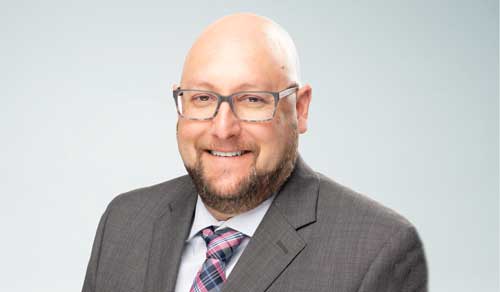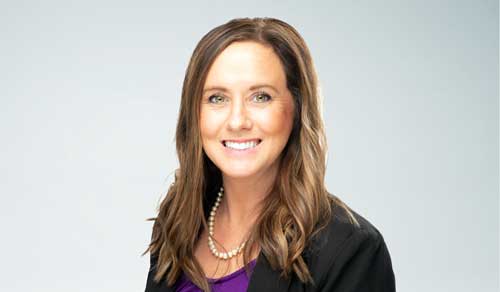When Joe Gorman was found dead from a heart attack in a Houston-area motel room, it seemed to be a simple open-and-shut case. But things aren’t always what they seem.
When Joe Gorman was found dead from a heart attack in a Houston-area motel room, it seemed to be a simple open-and-shut case. But things aren’t always what they seem.
The Oklahoma man’s address was for a UPS store, his prepaid cell phone was tied to a group of Irish Travelers (a secretive and nomadic group known for insurance fraud schemes), and his fingerprints led to a murder in Colleyville, TX. Investigators determined that Gorman was responsible for the murder of Anita Fox, a 68-year-old housekeeper. Gorman and his son, Patrick, stalked and brutally murdered Fox as part of a complex insurance fraud scheme involving Fox’s own daughter and son-in-law, Virginia and Mark Buckland. The Bucklands, who were English Travelers, had taken out several life insurance policies on Fox, naming themselves as beneficiaries, for a total of nearly $5 million. The Gormans were brought in as third-party investors. Ultimately, Patrick Gorman was convicted and sentenced to 14 years in prison, and in May 2018 the Bucklands were convicted in civil court of participating willfully with malice in a conspiracy that led to the murder of Anita Fox.
The Many Faces of Fraud
This dramatic chain of events demonstrates the lengths to which people will go to commit life insurance fraud. As an industry based on trust, life insurance presents an inviting target for fraudsters, and the variety of methods used to commit this sort of fraud continues to expand and evolve.
The case above is an example of community fraud, a term applied to the actions of certain groups for whom life insurance fraud is, in a manner of speaking, a way of life. Although these schemes can take many forms, community fraud frequently involves the purchase of life insurance through concealment or misrepresentation of material information, in order to outlive the policy contestable period and/or incur an early death due to an undisclosed illness or circumstance. While the techniques used can be sophisticated, the goal is very simple: windfall profit.
While community fraud may be limited to certain groups, anti-selection fraud – perhaps the most common type of fraud – seems to be everywhere. Anti-selection refers to an applicant’s withholding of pertinent medical or behavioral information, from a smoking habit to a hazardous avocation, to earn more favorable insurance rates. According to the Coalition Against Insurance Fraud, 15-30% of applicants will deliberately not disclose relevant information.1 While this might seem a little white lie to many, failure to disclose this type of information can drastically change the face value of the policy.
Take, for example, the following scenarios where an applicant fails to disclose tobacco use.
Scenario 1:
- Female, age 20, standard risk, non-tobacco, 20-year term, $1M face amount.
- Approximate annual premium: $600.
- Total premium collected over the life of the policy: $12,000.
Scenario 2:
- Female, age 20, standard risk, tobacco, 20-year term, $1M face amount.
- Approximate annual premium: $1,100.
- Total premium collected over the life of the policy: $22,000.
- Loss of collected premiums if issued at the incorrect tobacco class (from Scenario 1): $10,000.
Scenario 3:
- Male, age 60, standard risk, non-tobacco, 20-year term, $1M face amount.
- Approximate annual premium: $9,000.
- Total premium collected over the life of the policy: $180,000.
Scenario 4:
- Male, age 60, standard risk, tobacco, 20-year term, $1M face amount.
- Approximate annual premium: $21,000.
- Total premium collected over the life of the policy: $420,000.
- Loss of collected premiums if issued at the incorrect tobacco class (from Scenario 3): $240,000.
Beyond community fraud and anti-selection, other common forms of fraud include:
- Ghost writing: An insurance agent who may have had his or her license or appointment(s) revoked due to fraud or other business concerns partners with another appointed agent. The appointed agent submits the insurance application in place of the terminated agent and typically engages in the same poor business practices that led to the original agent’s termination.
- Churning: A broker or agent conducts excessive trading in a client’s account to generate commissions.
- Twisting: A broker or agent replaces an existing policy with a new policy from the same carrier for the purpose of generating additional commission revenue. More often than not, twisting results in an additional cost to the insured, in terms of lost cash value, higher premiums for the same face value, the need for re-underwriting, etc.
- Rebating: An agent, after commissions are paid out, refunds a portion of the premiums back to the applicant in the form of cash or in-kind items. Though illegal in most of the US, this scheme is subtle and can take a year or longer to discover. Rebating burdens the insurer and reinsurer with high acquisition costs and excessive policy lapses.
- False filings: This largely involves misrepresentation of the applicant’s business or personal financial status through document falsification. Examples include the use of unaudited certified public accountant (CPA) statements and overstated income and net worth figures.
- Stacking: A policyholder pursues multiple small policies to increase coverage, while reducing underwriting scrutiny by exploiting limited age and amount requirements.
Costs of Fraud
All told, the annual cost of fraud for the entire insurance industry is estimated at $80 billion. A recent poll conducted at the RGA Fraud Conference estimated the cost for the life insurance industry specifically at $10 to $20 billion annually. More than one-third of insurance companies estimate that fraud accounts for 5-10% of their claims volumes, and nearly 7 in 10 customers believe fraud happens because people believe they can get away with it.1
There are the obvious financial costs to insurance companies resulting from fraud, including potential lost profits, revenues and client assets. However, the carrier company’s reputation is also on the line. Fraud can impact future business and referrals and lead to negative customer experience. Customers are also affected when the costs of fraud are passed on to them through increasing premiums to offset losses.
Unfortunately, sometimes the costs associated with investigating, pursuing and prosecuting a fraud case do not justify the dollar amounts that would be recaptured by the insurance company. The expense of an investigation is prohibitive, and the need to cut losses ultimately outweighs the benefit of catching the perpetrator. In an ideal world, companies would be catching fraud before it occurs.
This speaks to the extremely important role underwriters and claims specialists have in the insurance value chain. They are the front line in identifying and stopping fraud before it is ever on the books. In this era of accelerated underwriting, it is essential the value of due diligence and critical thinking not be forgotten in protecting the industry and policyholders. The attentiveness of underwriters and claims professionals staying on top of the red flag behaviors that signify fraud is critical to protecting insurance companies and customers.
Red Flags
When it comes to fraud, industry professionals need to keep their guards up, to watch for common (and not-so-common) signs of fraud, and to have tools at their disposal to help them further investigate any concerns.
As previously mentioned, underwriters play a crucial role in the prevention of fraud. Here are a few red flags for which to watch:
- Signatures on application and paramedical exam not consistent.
- Inconsistencies in height, weight, physical descriptions, license numbers or Social Security numbers.
- Blatant material misrepresentation on the application.
- The use of a post office box as the primary insured’s residence, employer, mailing address or billing address.
- Money order (or other cash equivalent) used to pay initial premium, particularly a large single premium.
- Premiums exceed the applicant’s apparent means.
- Premiums paid by someone other than the insured or policy owner.
- Premiums financed by unapproved premium finance program.
- Applicants say they do not know how premiums will be paid.
- Financial information provided on the application is false or cannot be verified.
- Applications with multiple carriers in a short period of time, particularly for large face amounts with an accelerated death benefit.
- Applicant is a recent arrival to the US.
- Applicant resides, works or spends a great deal of time in a foreign country.
- Applicant cannot provide a driver’s license or other identification or has a temporary or recently issued form of identification.
- Applicant is overly interested in claim procedures or is unusually familiar with insurance terminology or procedures.
- Beneficiary does not have an insurable interest.
- Policy owner does not have a relationship to the insured.
- Initial premium is not valid (e.g., checking account information not valid, premium rejected due to insufficient funds, credit card payment rejected).
- Pattern of agent or broker closing out cases due to lack of requirements, then immediately submitting a new application on the same individual, particularly when the application escalates in premium value.
- Agent or broker submits multiple applications on the same individual without explanation.
- Excessive controlled business submitted by agent or broker.
- Pattern of agent or broker writing identical product, face amount and application information on multiple applicants (especially for products with limited underwriting requirements).
Trust your applicants, agents and brokers, but verify the information they are providing. Trust, but verify! Verify, but validate! Trust your gut, your experience and your training. Ask yourself: Does it make sense? If things don’t quite add up, speak up! Don’t be afraid to ask questions or ask for additional evidence – especially when you see red flags.
For an even more extensive list of red flags and investigation tools, see RGA’s list of fraud red flags.2 It is a helpful guide to the many warning signs to keep top of mind, from underwriting and policy application through claims processing.
Know the Tools Available and Use Them
When it comes to preventing fraud, information is power. In this technological age, there are endless ways to find additional supporting information. Some are easily accessible by anyone; others require registration or even payment. However, a little effort can help protect a company’s bottom line.
Internet Search
Sometimes the simplest tool is the most helpful. Consider the case of the drowning husband:
A death claim was filed on a policy purchased 6 months prior. The cause of death was accidental drowning while swimming in a lake. The body was said to have been found and cremated. The wife was listed as the beneficiary, and she asked that the claim be expedited. Because the matter of death was accidental, the insurance company conducted a limited investigation, which was usual. The insurer first searched online news sources and no articles about the drowning were found. A review of the online obituary showed the wife had a different last name from the insured. In addition, condolences posted with the obituary referenced a similar tragic death a few years prior. Reviews of Facebook showed the insured’s account was deactivated. Posts indicated the insured and beneficiary had recently been married. Other posts referenced the death of her previous husband, who had also died of accidental drowning.
The red flags generated by a simple online search led to an investigation. The investigation proved the drowning was fabricated, the death certificate was fraudulent, and the funeral home was complicit.
When a red flag is triggered, an internet search for local newspaper sites for obituaries of life insurance claims, doctors and specialists to match the information provided by a claimant, hotels, accident sites or weather conditions can be used to double-check a client’s story. Below are examples of online resources that can be of assistance:
- Black Book Online is an extremely powerful, free public record search tool for information including criminal cases, business ownership records and property ownership data.
- Zillow is a website that estimates the market value of a proposed insured’s home.
- Celebrity Net Worth is a reference tool that uses publicly available information to determine the net worth of high-profile individuals.
- The FAA Registry’s airmen search can help determine if your applicant is a licensed pilot.
- The Instant Checkmate Standard Report contains a person’s date of birth, phone numbers, address history, related persons, arrest records, government license information and social media profiles. (Premium reports may include civil judgments, corporate affiliations, watercrafts owned and more.)
Short-Term Disability Claims Data
The Presley Reed publication (now available as an e-book) is designed for short-term disability claims. It also serves as an excellent medical resource as it lists diagnoses, treatments, medications, co-morbidity issues and more. This can assist in identifying and understanding why a particular treatment has been undertaken, or querying why it has not been recommended.
The following hard-copy information sources can also be helpful.
Calendar
An old-fashioned calendar can provide lots of insight into a claim. When a date of an event is reported, pay particular attention to the day of the week and the time of the event – would a person normally be at that place, during that time? This can be a very useful initial inquiry point. For example, why was a construction worker, who died as a result of an accidental fall, at the building site in the evening on a weekend?
Travel Documents
Copies of passports, airline tickets, hotel reservations and more can be used to confirm information, whenever a claim event occurs outside of the country in which the policy was written. For passports in particular, it is typically worth checking if the insured holds more than one (e.g., dual citizenship).
Court Records
Underwriters often run motor vehicle record and criminal record checks during the underwriting process and may rate, add a flat extra or decline based on the findings. This could show a history of fraudulent activity. Embezzlement, fraud, insider trading, blackmail and extortion are considered serious offenses, and most companies will automatically decline anyone with a history of a conviction in any of the listed crimes.
Data
Oftentimes, companies collect data that has been identified as common among fraudulent claims and applications. For example, RGA’s Risk Scoring Model in India is being used very successfully to identify applications that require additional proof, based on certain triggers such as geographic area of residence, educational level attained, income band and more.
Risk Scoring Tools
Tools that leverage data such as prescription histories and credit scores to generate a risk profile can be used to help offset fraud as they include verifiable information on an applicant, which the applicant cannot intentionally manipulate. Prescription histories can help to verify medical questions on an application or provide direction for an underwriter to request specific details regarding the results.
Join the Fight Against Fraud
Underwriters and claims professionals cannot fight fraud alone. All insurance professionals need to increase awareness of the many different areas and types of fraud. Life insurance professionals must find ways to share knowledge, perspectives and fraud-prevention ideas. It would benefit us to go outside of our own companies to promote an industry-wide movement. LIMRA/LOMA has teamed up with fraud prevention experts and developers to create FraudShare, a fraud information-sharing and alert platform to combat account takeovers.
Companies should also work with organizations outside the insurance industry to share best practices for fighting fraud. Events such as the RGA Fraud Conference (www.rgare.com/fraud-conference) provide an opportunity for professionals from multiple disciplines and industries to collaborate and learn the latest fraud identification and prevention techniques.
The most important thing is to stay vigilant. Working together, sharing information, breaking down silos – this is how insurance fraud will be defeated. Fraud never rests and neither should we.




